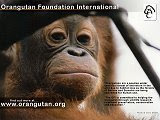Billion Tree Campaign to Grow into Seven Billion Tree Campaign
Grassroots Initiative Hits Two Billion Mark-Target Raised to Over One Tree per Person by Crucial 2009 Climate Convention Meeting
NAIROBI/NEW YORK, 13 May 2008 - A unique worldwide tree planting initiative, aimed at empowering citizens to corporations and people up to presidents to embrace the climate change challenge, has now set its sights on planting 7 billion trees.
It follows the news, also announced today, that the Billion Tree Campaign has in just 18 months catalysed the planting of 2 billion trees, double its original target.
The campaign spearheaded by the UN Environment Programme (UNEP) and the World Agroforestry Centre (lCRAF), was unveiled in 2006 as one response to the threat but also to the opportunities of global warming, as well as to the wider sustainability challenges -- from water supplies to biodiversity loss.
To date the initiative, which is under the patronage of Nobel Peace Prize Laureate and Kenyan Green BeIt Movement founder Professor Wangari Maathai and His Serene Highness Prince Albert II of Monaco, has broken every target set and has catalysed tree planting in close to 155 countries.
Achim Steiner, UN Under-Secretary-General and UNEP Executive Director, said today: "When the Billion Tree Campaign was launched at the UN Climate Change Convention meeting in Nairobi in November 2006, no one could have imagined it could have flowered so fast and so far. But it bas given expression to the frustrations but also the hopes of millions of people around the world".
“Having exceeded every target that. has been set for the campaign, we are now calling on individuals, communities, business and industry, civil society organizations and Governments to evolve this initiative onto a new and even higher level by the crucial Climate Change Conference in Copenhagen in late 2009”, he said.
"In 2006 we wondered if a billion-tree target was too ambitious: it was not. The goal of 2 billion trees has also proven to be an underestimate. The goal of planting 7 billion trees – equivalent to just over a tree per person alive on the planet – must therefore also be do – able given the campaign’s extraordinary track record and the self-evident worldwide support”, he added.
The Billion Tree Campaign bas become a practical expression of private and public concern over global warming.
Heads of State including the Presidents of Indonesia, Maldives, Mexico, Turkey and Turkmenistan as well as businesses; cities; faith, youth and community groups have enthusiastically take apart. Individuals have accounted for over half of all participants.
- In a single day in Uttar Pradesh, India, 10.5 million trees were planted.
- 35 million young people in Turkey have been mobilized to plant trees.
- 500.000 schoolchildren in sub-Saharan Africa and the United Kingdom have become engaged.
It has also attracted the support of multilateral organizations including the Convention on Biological Diversity, whose new Green Wave initiative was launched in advance of its important conference being held in Bonn, Germany later this month, supports the Billion, now Seven Billion, Tree Campaign.
Tree planting remains one of the most cost-effective ways to address climate change. Trees and forests play a vital role in regulating the climate since they absorb carbon dioxide – containing an estimated 50% more carbon than the atmosphere. Deforestation, in turn accounts for over 20% of the carbon dioxide humans generate, rivaling the emissions from other sources.
Trees also play a crucial role in providing a range of products and services to rural and urban population, including food, timber, fiber, medicines and energy as well as soil fertility, water and biodiversity conservation.
"The Billion Tree Campaign has not only helped to mobilize millions of people to respond to the challenges of climate change, it has also opened the door, especially for the rural poor, to benefit from the valuable products and services the trees provide", said Dennis Garrity, Director-General of the Nairobi-based World Agroforestry Centre.
"Smallholder farmers could also benefit from the rapidly growing global carbon market by planting and nurturing trees", he said.
The two billionth tree was put into the ground as part of an agroforestry project carried out by the UN's World Food Programme (WFP). It now planted 60 million trees in 35 countries to improve food security. This news comes as the United Nations calls for resolute action to end the global food crisis which affects an estimated 73 million people in 80 countries around the world.
In announcing the agency’s contribution to the Billion Tree Campaign. WFP Executive Director Josette Sheeran said: "WFP is concerned about rising costs of food and fuel which inevitably hit the "bottom billion' hardest. More people will require WFP assistance at a time when WFP’s current programmes are reaching fewer due to the critical funding gap created by rising costs.”
In terms of geographic distribution, Africa is the leading region with over half all tree plantings. Regional and national governments organized the most massive plantings, with Ethiopia leading the count at 700 million, followed by Turkey (400 million), Mexico (250 million), and Kenya (100 million).
The campaign has also generated significant appeal in post-conflict and post-disaster environments. In acting upon the words of the campaign's patron Wangari Maathai "when we plant trees, we plant the seeds of peace and seeds of hope", communities in Afghanistan, Bosnia-Herzegovina, Iraq, Liberia and Somalia contributed to the global effort with over 2 million trees.
Furthermore, mangrove plantings were organized by Planete Urgence in Banda Aceh and other Indonesian provinces recovering from the December 2004 Indian Ocean tsunami, while the “Replant New Orleans” initiative in the United States sponsored a planting of fruit-bearing trees to breathe new life into a community struggling in the aftermath of the 2005 Hurricane Katrina.
The private sector pitched in as well, accounting for almost 6% of all trees planted. Multinational corporations including Bayer, Toyota, Yves Rocher, Accor Group of Hotels and Tesco Lotus supported the campaign, as did hundreds of medium and small-sized enterprises the world over.
The Billion Tree Campaign has further highlighted the cultural and spiritual dimension of trees with groups as diverse as the International Olympic Committee, the World Scouting Movement, SOS Sahel Initiative or yet “Geiko and Maiko for Forests" – Japanese geishas from the hometown of the Kyoto Protocol - actively participating in the initiative.
"The Billion Tree Campaign is lJNEP’s call to the nearly 7 billion people sharing our planet today to take simple, positive steps to protect our climate. It is a defining issue of our era that can only be tackled through individual and collective action. I am convinced that the new target will be met - one tree at a time”, concluded Executive Director Steiner.
Notes to Editors:
Below arc several notable websites of partners and other related links:
The Billion Tree Campaign with pledges, plantings and news:
www.unep.org/billiontreecampaign or http://www.worldagroforestry.org/billiontreecampaign
The United Nations Framework Convention on Climate Change (UNFCCC): http://www.unfccc.int
The Copenhagen 2009 Climate Change Conference: http://www.cop15.dk/en
The Convention on BioIogical Diversity (CBD): http://www.cbd.int: the CBD's Green Wave: http://greenwave.cbd.int: and the CBD's COP 9: http://www.cbd.int/cop9/
The World Agroforestry Centre (lCRAF): http://www.worldagroforestrycentre.org
The World Food Programme (WFP): http://www.wfp.org
The Nature Conservancy: http://www.nature.org
UNEP’s climate change pages: http://www.unep.org/themes/climatechange/
Nick Nuttall, UNEP Spokesperson. in Nairobi, on Tel: ![]()

![]()
![]()
![]()
![]() +254-20-762-3084
+254-20-762-3084![]() . Mobile:
. Mobile: ![]()

![]()
![]()
![]()
![]() +254-733-632755
+254-733-632755![]() or when traveling:
or when traveling: ![]()

![]()
![]()
![]()
![]() +41-79-596-5737
+41-79-596-5737![]() , or e-mail: nick.nuttall@unep.org
, or e-mail: nick.nuttall@unep.org
Anne-France White, Associate Information Officer, on Tel: ![]()

![]()
![]()
![]()
![]() +254-20-762-3088
+254-20-762-3088![]() . Mobile:
. Mobile: ![]()

![]()
![]()
![]()
![]() +254-728-600-494
+254-728-600-494![]() , or e-mail: anne-france.white@unep.org
, or e-mail: anne-france.white@unep.org
Michael Hailu, Director of Communications, World Agroforestry Centre, Tel: ![]()

![]()
![]()
![]()
![]() +254-20-721-4248
+254-20-721-4248![]() , Mobile +25-1-722-208-879 or email: m.hailu@cgiar.org
, Mobile +25-1-722-208-879 or email: m.hailu@cgiar.org
Article Source: www.dephut.go.id



